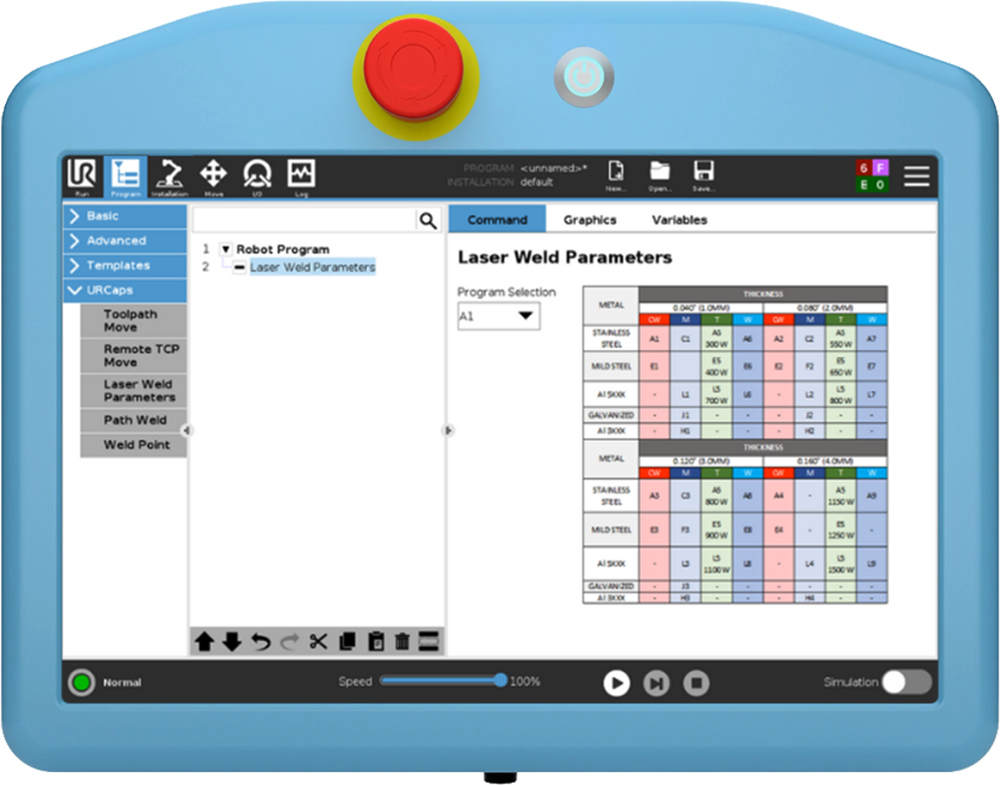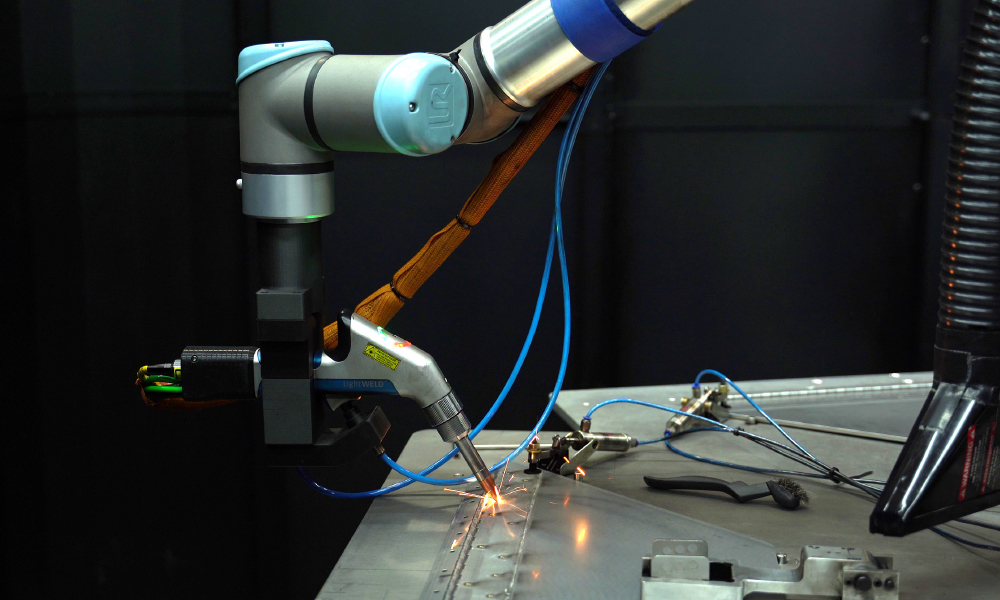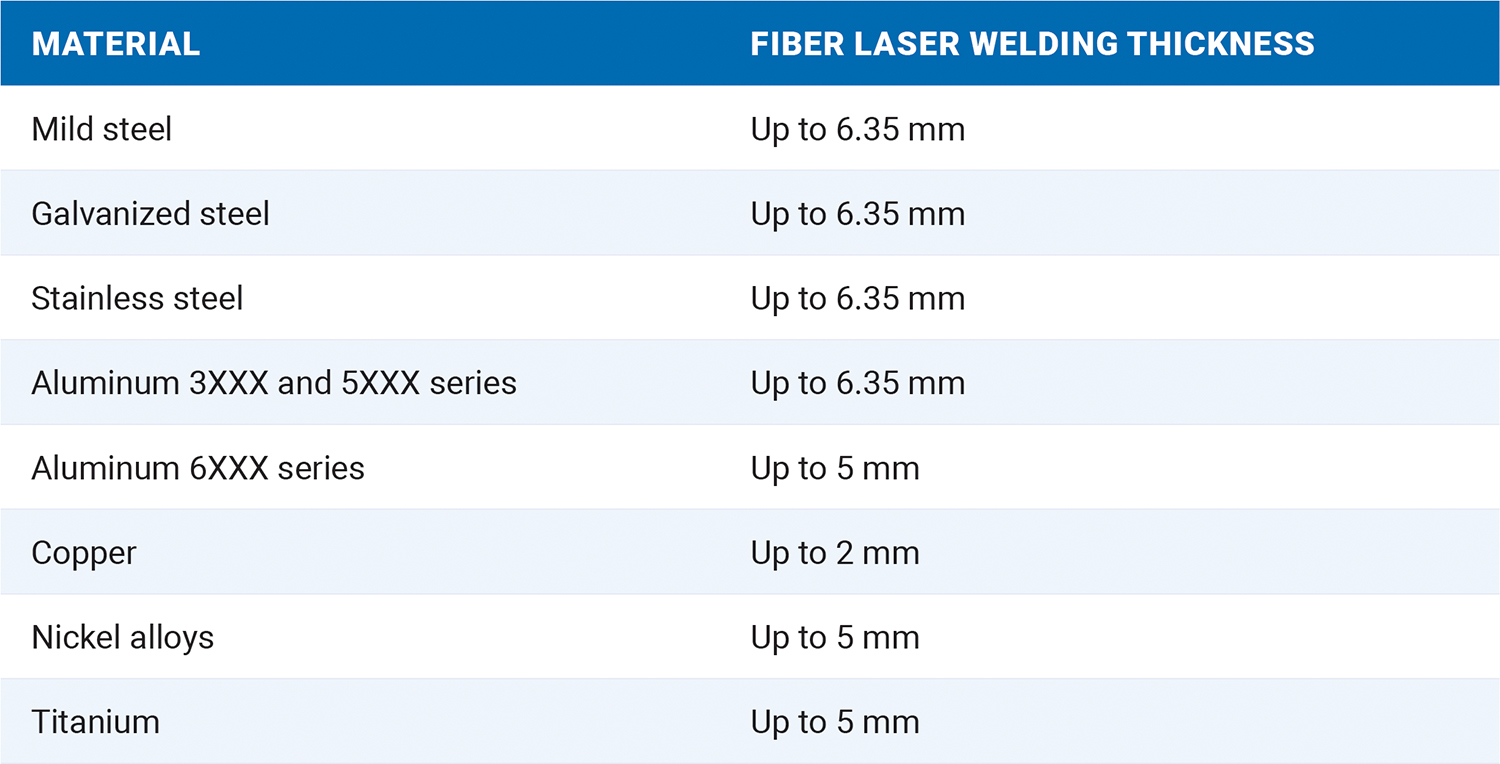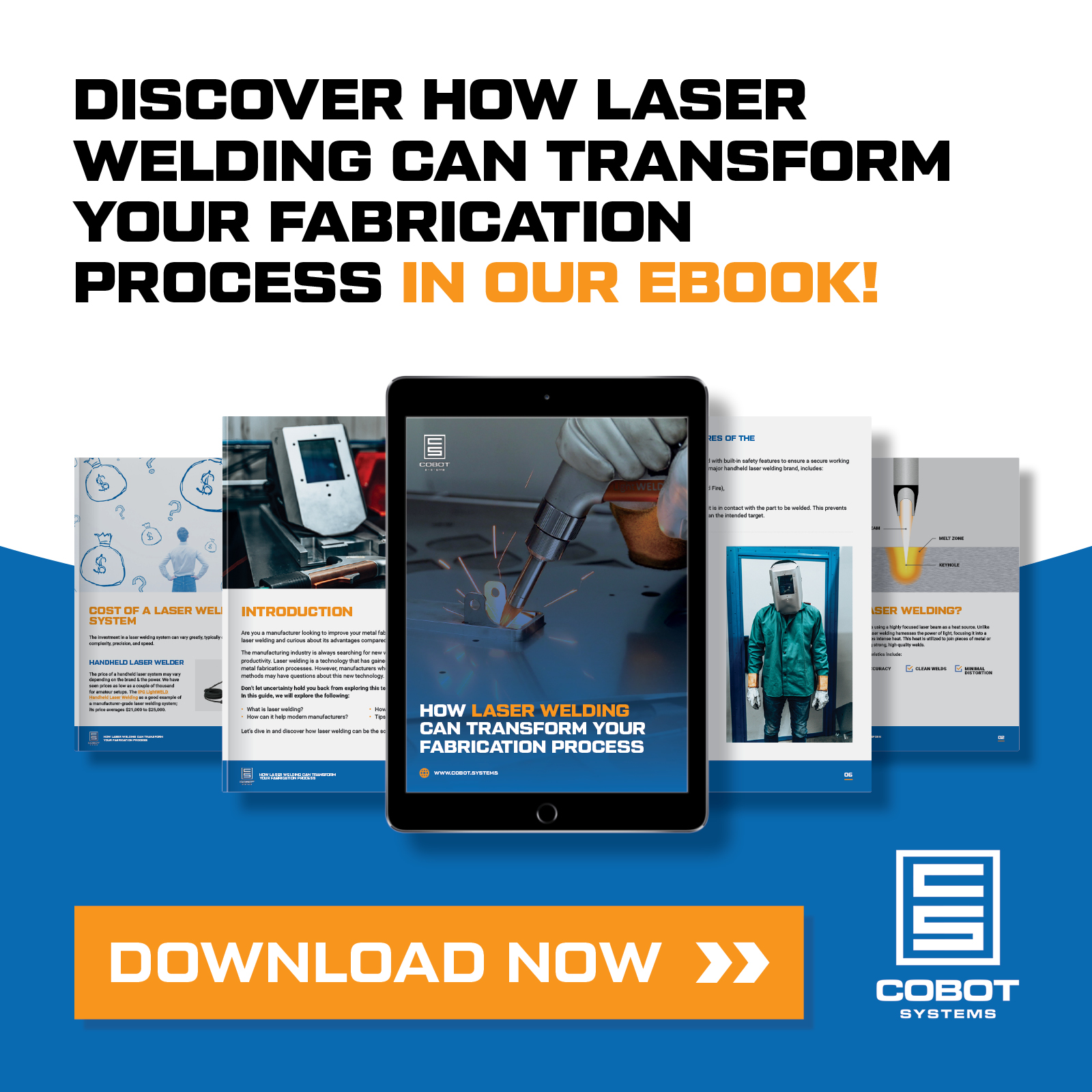Laser welding has significant advantages over traditional welding processes in many applications, especially sheet metal welding. While automating laser welding with a cobot will improve your production, choosing the laser welding system and a cobot is critical for success.
Read on to learn how to choose the most suitable cobot for your business, the advantages of laser welding, some critical things to consider, and pitfalls to avoid.
In this article:
• Choosing Your Cobot For Automated Laser Welding ›
• How To Choose a Laser Welding Type For Your Cobot ›
• Traditional Robots vs. Collaborative Robots For Laser Welding ›
• Advantages Of Cobot Laser Welding ›
• Why Laser Welding With a Cobot Is The Best Solution ›
• Ready To Put Automated Laser Welding To Work? ›
Choosing Your Cobot For Automated Laser Welding
When choosing a cobot for laser welding, consider the whole system, not just the cobot. The system should include the safety enclosures, laser welding power source, cobot, and software.
The Safety Enclosures
Not all laser welding cobot systems include the safety enclosures, leaving you with an additional cost and the requirement of procuring and setting them up. Interlocked safety enclosures are fundamental for laser welding, whether with a cobot or manually.
These enclosures prevent the cobot from laser welding if the interlock is opened. So, if one of your staff accidentally opens the door, they and others in the area can’t be exposed to laser radiation. The interlock immediately shuts down the laser if opened.
The laser welding cobot from Cobot Systems includes a full enclosure setup you need for safe cobot laser welding in your facility.
Which Cobot Brand Should You Consider?
While there are many cobot manufacturers, one stands out as the most widely recognized—Universal Robots. In particular, the URe10 model has become synonymous with the word “cobot,” and for a good reason. More than 75,000 UR cobots are deployed worldwide. They have proven themselves as reliable and flexible for most manufacturing requirements.
However, unless you go the DIY route, you can’t quickly deploy a UR cobot for laser welding. This is where integrators like Cobot Systems come in. The Laser Welding Cobot System includes a UR10e cobot along with everything else you need, including the tooling for the laser welding gun and software.
Which brings us to…
Cobot Laser Welding Software
The software will significantly impact your cobot laser welding efficiency. Unless your welders/operators have experience with robotics, you’ll want to use the simplest possible software for cobot programming. But even if your staff has experience, the easier the software, the less downtime you’ll have between cobot programming for new parts.
For example, the Laser Welding Cobot System includes an Ur Cap software. It’s a no-code programming software designed for welders and shop workers to maximize their efficiency and eliminate frustrating software experiences.

The Cobot System’s UR Cap teach pendant is highly intuitive and includes the laser weld parameters. So, your operators can select the program for the welded material and thickness right on the pendant, instead of going back and forth with the laser power source.
You can also adjust the key parameters like the laser power and wobble frequency in the software. Most importantly, these settings are quickly available to the operator and not hidden behind an excessive number of menus and windows.
Your Integrator’s Experience And Support
Cobot laser welding is still a new technology on the market. So, you should consider the experience and support your integrator can offer. Even handheld laser welding is relatively new. While these technologies are helping many businesses drastically improve their welding quality and productivity, you should carefully evaluate the system and the team behind it.
Cobot Systems is the pioneer for cobot laser welding. The Laser Welding Cobot System is the industry-first system of its kind, developed by Cobot System’s engineers with expertise in machining and laser welding. Usually, robotic integrators understand the automation part, but not necessarily the actual application. Cobot System has expertise in both, making it easier for shops to get started with high efficiency and low downtime.
How To Choose a Laser Welding Type For Your Cobot
There are a few types of laser welding, but fiber laser welding is the most favorable process for everyday shop welding and cobot use. Fiber laser welding machines are much more energy efficient, reducing your operating costs. More importantly, fiber lasers are robust enough for shop conditions, and the equipment is highly flexible. You can easily use a handheld laser welding system or automate it with a cobot.
Fiber laser welding is best suited for general sheet metal fabrication, automotive, aerospace, electronics/equipment manufacturing, and food and beverage industries. Basically, most sheet metal welding tasks that require precision and exceptional weld quality.
How Fiber Laser Welding Works
Fiber lasers are a type of solid-state laser that uses an optical fiber doped in rare earth elements as the gain medium, resulting in high power and very precise laser output.
Essentially, a handheld, or cobot-held, fiber laser uses a laser gun to melt and fuse the two materials together with or without a filler metal. The gun has several components, including the focus lens, protective window, and nozzle assembly. Once the nozzle is in contact with the metal with a work clamp attached, the gun is ready to fire the laser upon pressing the trigger.

Fiber laser welding requires a shielding gas, just like MIG or TIG. The purpose is the same; the shielding gas prevents the oxidation and atmospheric contamination of the weld area while it’s molten. However, unlike MIG/TIG, fiber laser welding requires nitrogen for carbon steel, stainless, copper, and nickel alloys. Nitrogen is cheaper than argon or argon/CO2 mixes, and businesses can generate their own nitrogen with a nitrogen generator. Laser welding aluminum and titanium requires 100% argon.
Fiber Laser Welding Materials And Applications
Laser welding has a broad application range. You can use it for almost any commonly welded metal, including dissimilar material welding. Laser welding is only limited in thickness for single-pass, single-sided welds.

Traditional Robots vs. Collaborative Robots For Laser Welding
If at this point you aren’t sure if a cobot is best suited for your automation needs, let’s quickly explain the difference between traditional robots and cobots. Traditional robots aren’t as easy to deploy as collaborative robots (cobots). Cobots have a lower barrier to entry and offer much more for low-volume, high-mix applications.

Traditional robotics typically require skilled programmers for part automation, and the programming times are long. They are best used for very high volumes in serial production, like car manufacturing.
For small and medium-sized shops and manufacturers who have high part volatility, cobots are a significantly better choice. You can program and re-program a cobot in minutes instead of hours or days.
Likewise, with the right cobot system, your own staff can learn to use them. So, there’s no need to hire specialized staff.
Advantages Of Cobot Laser Welding
Automated laser welding can significantly improve your manufacturing workflow. You can make welds faster with little time before part handling, nearly eliminate distortion, and significantly reduce operator training time.
Depending on the thicknesses you weld, automated laser welding can be the most transformative technology you can introduce to your shop if you are in the food and beverage, sheet metal, aerospace, transportation, or general fabrication industries.
Some of the most significant laser welding advantages are:
• Minimal HAZ and heat input
• High speed
• Low distortion
• Exceptional weld quality
• High accuracy
• Can weld autogenously or with a wire
• Perfect for sheet metal
• Low consumable wear
• Little to no post-welding work
• Faster part handling
Why Laser Welding With a Cobot Is The Best Solution
Laser welding works well manually, but you’ll get better and more uniform results with a cobot. It also reduces the operator’s skill requirement and makes it much easier to ensure reliable production. A cobot always welds precisely as instructed. With a cobot, you can perform precise welding with standardized results.
Cobot laser welding also ensures high uptime, even if your welder calls in sick. With the right cobot system, your whole staff can quickly learn how it works. So, in case of absence, anyone can jump in and keep the cobot welding.
Most importantly, cobot laser welding consistently ensures high welding speed, allowing you to boost your production reliably. For example, Quality Tooling and Repair (QTR) has integrated the Cobot System’s laser welding cobot to reduce their part welding time from 90 minutes to just 10 minutes, and they can do that consistently.
Ready To Put Automated Laser Welding To Work?
Whether you are an OEM, a small fab shop, or offer a broad range of manufacturing services, cobot laser welding can drastically improve your business. The Laser Welding Cobot System is the solution for the tight labor market and high production demand.
Book a demo with our team, and we’ll help you decide if automated laser welding can help your business as it did for many of our customers.





